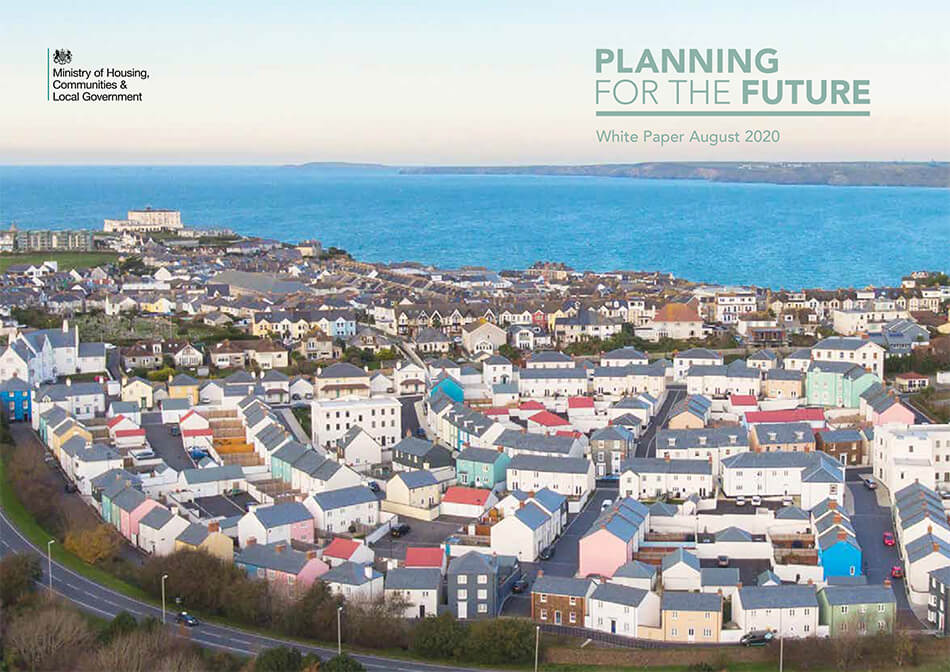Planning for the future – Article #1
The government’s white paper Planning for the future seeks a “significantly simpler, faster and more predictable system” through a number of high-level reforms which seek to streamline the planning process.

Boyer have reviewed the proposed amendments to the system and assessed how these could have impacted a number real life projects that we have worked on in recent years. This article is the first in a series of four which considers the implications on a range of projects.
The proposed new streamlined Local Plan process will potentially have a significant impact on the promotion of land currently within the Green Belt.
Boyer are promoting a number of large sites for development situated within the Metropolitan Green Belt that surrounds London. As anyone involved in the promotion of such land will testify, this process can be a long drawn out affair that involves an extensive evidence base to justify the release of land from the Green Belt (both for the Local Planning Authority and site promoter). Strong local opposition can often politicise the process resulting in a Local Plan taking several years to reach adoption. The desire to streamline this process is therefore perfectly understandable and should be supported, however the White Paper raises a number of fundamental issues that aren’t fully answered and will not be until more detail is known.
In the short term, the Government is consulting on changes to the standard method for assessing local housing need. However, the White Paper is proposing a more radical change that will introduce a standard method to set binding housing requirements that will take account of both housing need and constraints, including Green Belt.
This begs the question of precisely how the presence of Green Belt land is to be factored into a new standard formula to assess an authority’s housing requirement. How much weight will be given to protecting Green Belt in the formula against the current emphasis on boosting supply in areas suffering worsening affordability issues? A number of Green Belt authorities, particularly in the South East, fall into this category where the necessity for Green Belt release around sustainable settlements will grow especially as more brownfield sites are developed, so reducing this source of supply.
In light of this, it is important that local authorities with a high percentage of Green Belt do not end up with a housing requirement, calculated by a new standard method, that is substantially less than their level of housing need. Acute affordability pressures, increasing housing needs and the demands of economic recovery and growth all demand that local authorities with significant areas of Green Belt are required to conduct Green Belt reviews and release such land and then for this land to become part of the new Growth Area zoning . A blanket protection status for Green Belt applied through a new Standard Method would be damaging and this cannot occur if the Government’s national housing target is to be achieved.
There is also a question as to how Green Belt could be reviewed and released under the new planning system. With the stated desire to remove much of the evidence base underpinning the Local Plan process and the assumption that the exceptional circumstances test in the NPPF would remain, how would a Local Planning Authority justify any areas of release (e.g. what should be the new Green Belt boundaries? How would a qualitative assessment of the Green Belt be undertaken to determine what areas, if any, are suitable for release?). In light of the fact that public engagement is focused within the first 6 months of the new Local Plan process, with only a 6 week statutory period in parallel to the Plan being submitted for examination, what realistic opportunity is there to critique/challenge the Council’s approach prior to examination? The necessity to complete the whole Local Plan process within 30 months raises the prospect that an aggrieved third party may mount a legal challenge potentially as a means to challenge the Council’s approach similar to what occurred following the publication of the NPPF in 2012.
Overall, it is clear to us that there will be a continuing need to consider the release of Green Belt land to meet an area’s housing need. Initially at least, this could be “rule” or formula based without the transparency of a published evidence base. Ultimately, we expect the new planning system to provide a basis for Green Belt release and for the nature and extent of that release to continue to be a local responsibility. It is just very unclear, at present, how this will operate. As with everything, the devil is in the detail, which in the case of Green Belt matters, can’t come soon enough.
